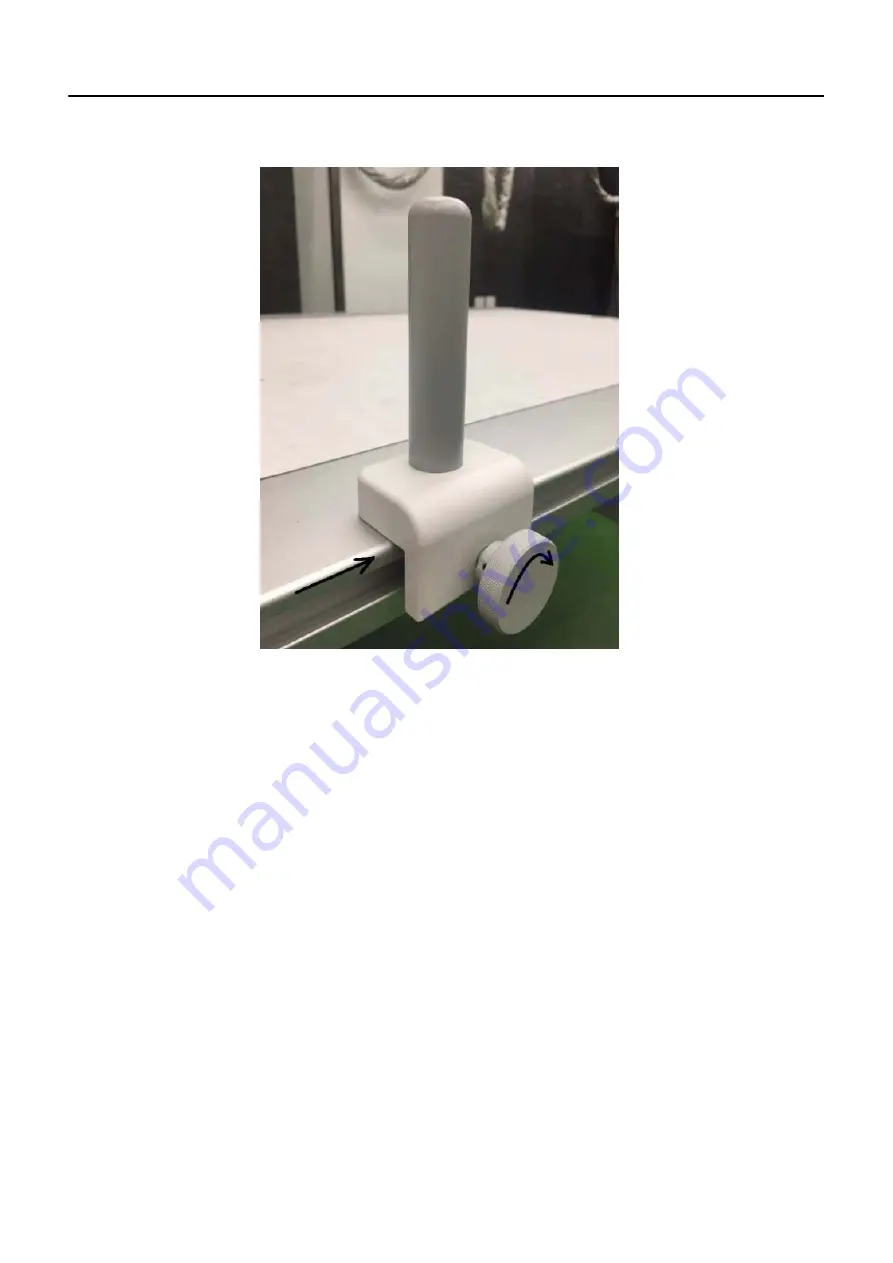
Chapter 8: System Hardware Overview
5495975-1EN Rev.9
8-75
© 2013-2017 General Electric Company. All rights reserved.
Figure 8-56
Clamp and hand grip locked
Remote Control
The remote control allows you to set the field of view, manually collimate, or enable the collimator lamp,
also allows you to move the Wallstand Receptor. Refer to
for details.
1. Aim the remote directly at the Wallstand Display.
For Collimator (FOV) and Tube positioning, aim the remote at the sensor area of the Wallstand Dis-
play. (Refer to
)






























